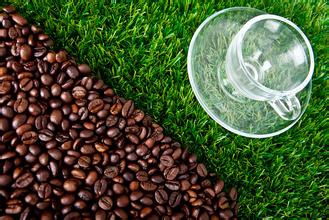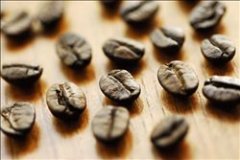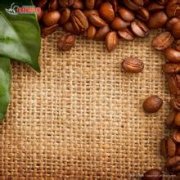A brief introduction to the market price of clean and elegant Yejia Xuefei boutique coffee beans

1. Very shallow baking (LIGHTRoast):
The degree of baking; very shallow baking, also known as shallow baking.
The lightest roasting degree of all roasting stages, the surface of the coffee beans is a light cinnamon color, its taste and aroma are insufficient, this state is almost undrinkable. It is generally used for testing and seldom for tasting.
2. Shallow baking (CINNAMONRoast):
Degree of baking; shallow baking, also known as cinnamon baking.
The general baking degree, showing cinnamon color on the appearance, the smell of green has been removed, the aroma is OK, and the acidity is strong, which is a common roasting degree of American coffee.
3. Micro baking (MEDIUMRoast):
Baking degree; moderate baking, also known as micro baking.
Medium baking heat and light baking are both American, in addition to sour taste, bitterness also appears, the taste is good. It has moderate aroma, acidity and mellowness, and is often used in the baking of mixed coffee.
Full sun exposure, which means that the fruit is washed and dried directly after being picked. It can maximize the sweetness and highlight the fermented fruit flavor.
Honey treatment, in fact, the fruit hanging off the surface of the epidermis leaving pectin in the air, and according to the degree of scraping off yellow honey (scraped off 60%) and red honey (30%) and a kind of black honey is actually full sun. The taste between washing and sunbathing
The long time of water washing fermentation depends on water washing, fermentation, peeling, drying, sour, refreshing, clean, elegant and floral fragrance.
Half-washed, first scrape off the pectin peel with a machine and then wash and ferment
Semi-washing actually scrapes off more pectin than honey treatment, leaving very little pectin in the sun, drying for three days in a dryer until 10%.
In general, raw beans dried in the sun are bluer and greener and more uniform than those dried by machines. The water content of raw beans can not be judged simply according to the color depth. The best moisture content of raw beans is 9% Murray 12%. The water content of raw beans must be well controlled in storage. Once the water content exceeds 13%, raw beans are easy to breed carcinogenic toxins.
Bean selection: first put the coffee fruit into the big water tank, move the red fruit and semi-green and semi-red fruit into the pulp sieving machine to remove the pulp and impurities.
Remove pectin: take out the coffee beans, do not need to take the sun, let alone pour into the sink to ferment, but directly into the next pectin scraper, only a small amount of water can scrape away the sticky pectin chips mechanically.
Sun exposure: then take out the raw beans with a smooth surface and expose them outdoors until the water content is reduced to 12%.
Honey treatment, called Honey Process or Miel Process, is known as Honey Coffee. Coffee gardens in Costa Rica (Costa Rica), Panama (Panama) and Taiwan all use this method.
1. When picking beans, only fully ripe crimson coffee cherries are picked. Before exposure, the beans will be screened for defects in the processing plant to make the beans look more average in size and maturity.
two。 Next, use tall wooden frames or whole scaffolding for the sun to avoid the risk of beans smelling on the ground. In the process of exposure, take good care of the beans so that the coffee beans can be evenly exposed to water; every three to five days, coffee workers will manually screen out defective and moldy beans. Therefore, by the time the exposure is completed, before the beans enter the market to remove the peel and flesh, a bright crimson coffee cherry is already a grade with few defects.
The Red Cherry Project (Operation Cherry Red), led by the Dutch trading company Trabocca BV and partly funded by the Dutch government, has been a small-scale farm quality improvement project since 2005. This project, which enhances coffee production and quality in remote areas of Ethiopia by providing producer expertise and related technology assistance, has been selected since 2005 for small coffee cooperatives at high elevations in Sidamo, Yegashev and Lim. Encourage and assist producers to improve the quality of coffee through testing (professional cup testers are also stationed in coffee producing areas) to ensure the quality of each batch by improving washing, semi-washing, solarization or other experimental treatments as far as they can. Before the harvest season, Trabocca invites selected smallholder organizations / producers to participate in the production of micro-batches of coffee (about 1500 to 3000 kg), carefully picking 100% ripe red coffee cherries by hand (hence the name Red Cherry Project).
Important Notice :
前街咖啡 FrontStreet Coffee has moved to new addredd:
FrontStreet Coffee Address: 315,Donghua East Road,GuangZhou
Tel:020 38364473
- Prev

A brief introduction to the History and Culture of the Origin and Development of Yega Xuefei Fine Coffee beans with medium acidity
Yega Chuefei Coffee characteristic Flavor description Taste Grinding scale Variety production area introduction Anchor most coffee beans are washed, but a small number of crystal beans deliberately use the sun method to enhance the charming fruit aroma and mellow thickness. These mountain villages are foggy, like spring all year round, with a gentle breeze in summer, cool but not hot, rain but not damp, and no cold damage in winter, giving birth to unique oranges and
- Next

A brief introduction to the planting situation of Yega Xuefei Fine Coffee beans with Fruit and Flower fragrance, Geographic location, Climate and altitude
Since 2006, some coffee processing plants in some producing areas have adopted the exquisite elevated shed sun drying method, which invests in high-intensity human labor, which isolates the coffee fruit from contact with the ground and prevents the miscellaneous smell of soil in the process of sunlight. create an unusually clean fruit flavor. After more than two weeks of sun exposure, the dark brown coffee fruit is professionally stored, waiting for the whole
Related
- Detailed explanation of Jadeite planting Land in Panamanian Jadeite Manor introduction to the grading system of Jadeite competitive bidding, Red bid, Green bid and Rose Summer
- Story of Coffee planting in Brenka region of Costa Rica Stonehenge Manor anaerobic heavy honey treatment of flavor mouth
- What's on the barrel of Blue Mountain Coffee beans?
- Can American coffee also pull flowers? How to use hot American style to pull out a good-looking pattern?
- Can you make a cold extract with coffee beans? What is the right proportion for cold-extracted coffee formula?
- Indonesian PWN Gold Mandrine Coffee Origin Features Flavor How to Chong? Mandolin coffee is American.
- A brief introduction to the flavor characteristics of Brazilian yellow bourbon coffee beans
- What is the effect of different water quality on the flavor of cold-extracted coffee? What kind of water is best for brewing coffee?
- Why do you think of Rose Summer whenever you mention Panamanian coffee?
- Introduction to the characteristics of authentic blue mountain coffee bean producing areas? What is the CIB Coffee Authority in Jamaica?

